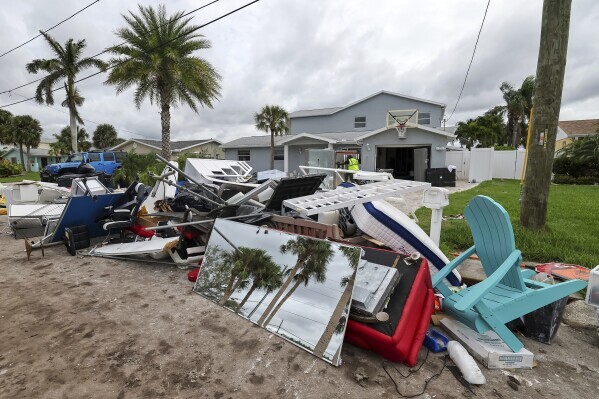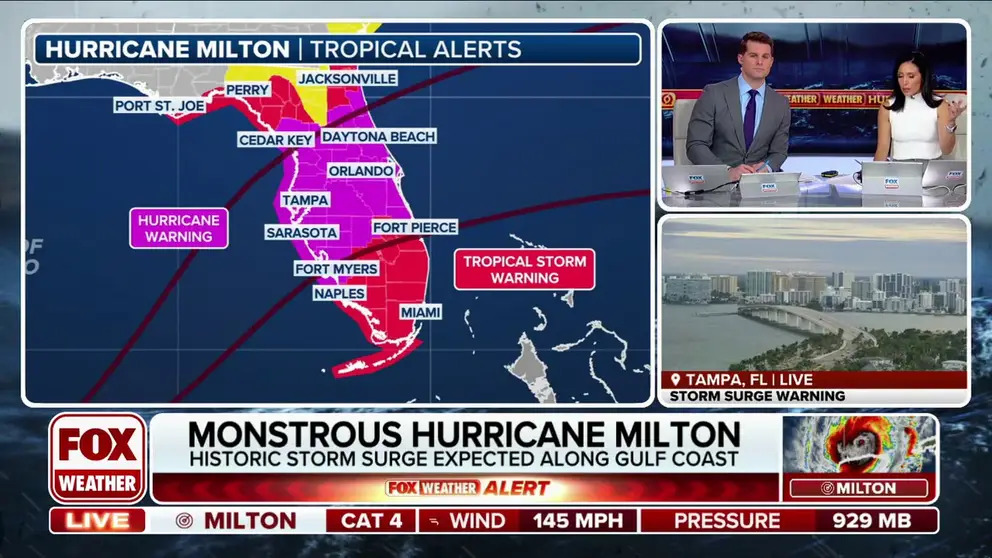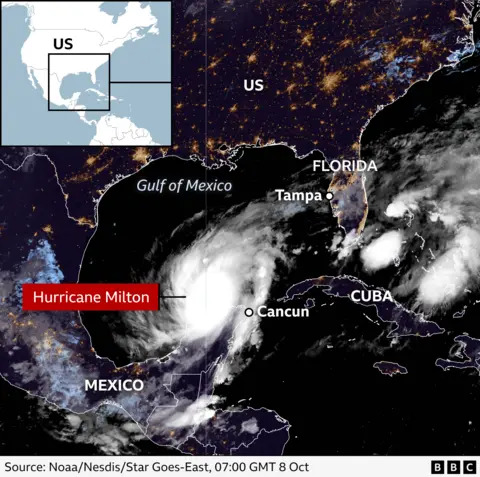Pathostheatre News
Florida Braces for Destruction as Hurricane Milton Approaches
As Hurricane Milton barrels toward Florida, residents and authorities alike are preparing for what is expected to be one of the most devastating storms of the 2024 hurricane season. With forecasts predicting extensive damage due to high winds, flooding, and storm surges, the Sunshine State is once again facing a formidable natural disaster. Here’s a detailed breakdown of the current situation and how the storm may impact Florida.

Overview of Hurricane Milton’s Formation and Path
Hurricane Milton, currently a Category 4 storm, began as a tropical depression in the Gulf of Mexico but rapidly intensified due to favorable oceanic conditions and warm water temperatures. Initially projected to remain offshore, it shifted course and gained strength, threatening Florida’s western coastline. By October 8, 2024, it was nearing landfall, with winds exceeding 150 mph. The storm’s forecast cone indicates significant impacts on cities such as Tampa, Orlando, and Fort Myers. Officials have issued Hurricane and Storm Surge Warnings across the region, urging residents to take immediate action.
Projected Impacts: Wind Speeds, Flooding, and Storm Surges
Meteorologists are predicting catastrophic conditions as Milton approaches, with the greatest threats coming from storm surges and high winds. Storm surges are forecasted to exceed 10 feet in some coastal areas, which, combined with heavy rainfall, poses a severe risk of flooding. The winds, already classified within Category 4, have the potential to cause widespread structural damage, particularly to homes and businesses along Florida’s western shore. Flash flooding is also a concern, with forecasts of up to 12 inches of rain in certain regions.

Emergency Preparedness and Evacuations in Affected Areas
With the storm’s impending landfall, Florida’s state officials have been mobilizing resources to ensure public safety. Shelters have opened across all 67 counties, with mandatory evacuation orders in place for low-lying coastal areas and flood zones. The National Guard is on standby, and local authorities are working to ensure the efficient distribution of supplies like food, water, and medical aid. Residents have been urged to heed warnings and evacuate if instructed, as the risks from wind damage and storm surges are extreme.
Historical Comparisons: Hurricane Milton vs. Previous Storms
Hurricane Milton is being compared to some of the most severe storms in recent history, including Hurricane Helene, which struck just weeks earlier. Experts have noted that Milton’s path and intensity are reminiscent of 2017’s Hurricane Irma, which caused significant destruction across the state. However, Milton’s rapid intensification and predicted storm surge could surpass previous records, especially given the vulnerability of Florida’s west coast. Residents and businesses, still recovering from previous storms, now face the daunting prospect of another major hurricane.
Long-Term Implications and Climate Change
Hurricane Milton’s rapid intensification is yet another example of how climate change is influencing weather patterns, particularly in coastal regions. Warmer ocean temperatures contribute to the strength and longevity of tropical storms, with scientists warning that storms like Milton could become the norm. As sea levels continue to rise, Florida’s susceptibility to flooding and storm surge grows, making long-term infrastructure planning and climate resilience more important than ever. Local governments are now grappling with the financial and logistical challenges of preparing for a future of more frequent and powerful storms.
From Pathostheatre


